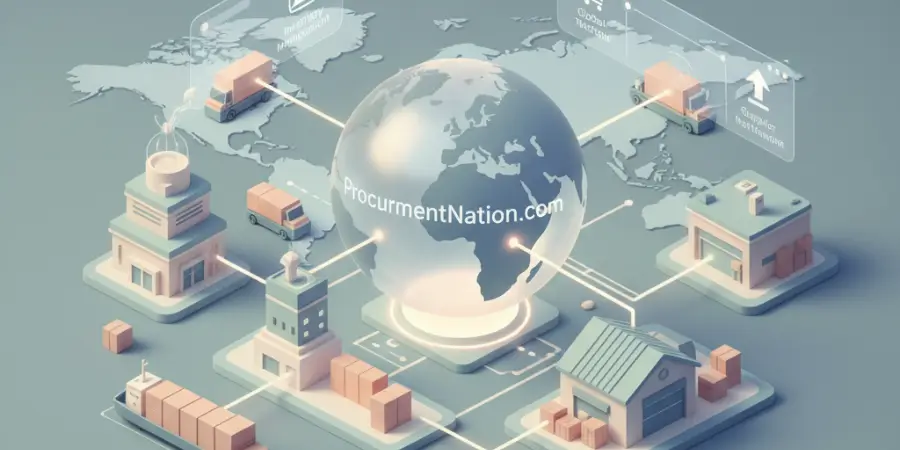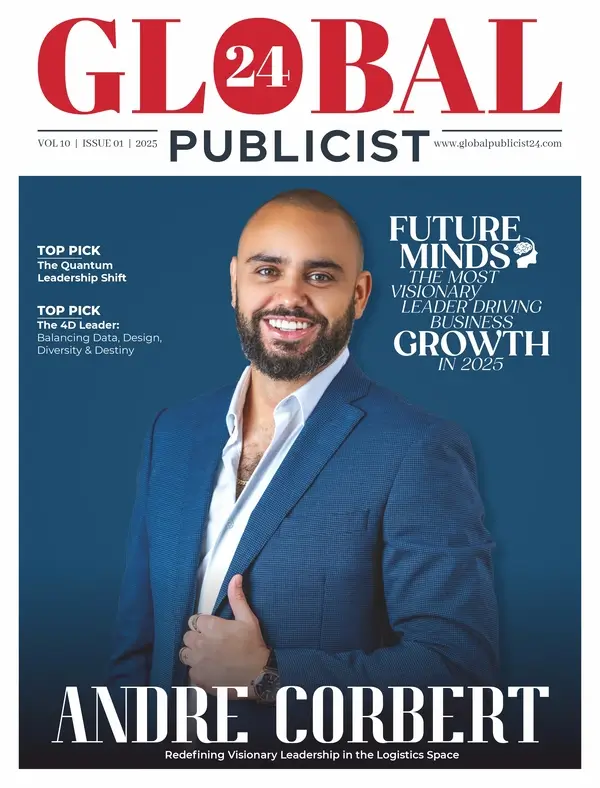Customer engagement has evolved from transactional relationship management to strategic business imperative companies with strong engagement strategies achieve 63% lower customer attrition, 55% higher share of wallet, and 50% higher productivity according to Gallup’s extensive research analyzing thousands of B2B and B2C relationships. Yet despite recognizing engagement’s importance, most businesses struggle with execution: Forrester Research found that only 22% of companies rate their customer engagement capabilities as “excellent,” while 58% acknowledge significant gaps between engagement aspirations and actual customer experiences. The disconnect stems from treating engagement as marketing tactic rather than comprehensive business strategy, implementing technology without corresponding process changes, and measuring activity metrics rather than outcome-based indicators that demonstrate genuine relationship depth. For business leaders, marketing directors, and customer experience professionals seeking to move beyond engagement platitudes toward measurable relationship improvements, understanding evidence-based strategies, implementation frameworks, measurement approaches, and organizational requirements proves essential. This analysis examines six proven methods for strengthening customer engagement, supported by research, case studies, and practical guidance for implementation across industries and business models.
Understanding Customer Engagement in Modern Business Context
Defining Customer Engagement Beyond Buzzwords
Before examining specific strategies, establishing clear definition prevents the conceptual confusion plaguing many engagement initiatives:
Customer Engagement Definition: The ongoing interactions between company and customers, offered by the company, chosen by the customer, that strengthen the emotional, psychological, and physical investment a customer has in a brand.
Key Characteristics:
Bidirectional:
- Traditional marketing pushes messages; engagement involves dialogue
- Customers actively participate rather than passively receive
- Feedback loops inform continuous improvement
Emotional Connection:
- Transcends functional product/service satisfaction
- Creates identity association (“I’m an Apple person”)
- Generates advocacy behavior (unprompted recommendations)
Consistent Over Time:
- Not campaign-based but always-on relationship cultivation
- Accumulates through repeated positive interactions
- Survives occasional negative experiences due to relationship equity
Multi-Dimensional:
- Cognitive engagement: Attention, thought, consideration
- Emotional engagement: Feelings, attachment, identification
- Behavioral engagement: Actions, purchases, advocacy
Why Customer Engagement Matters: The Business Case
Financial Impact:
Customer Lifetime Value (CLV): According to research from Bain & Company analyzing customer relationships across industries:
- Highly engaged customers generate 23% premium in revenue, profitability, and relationship growth compared to average customers
- CLV increases 300-400% over customer relationships progressing from low to high engagement
Retention Economics:
- Acquiring new customers costs 5-25x more than retaining existing customers (Harvard Business Review)
- Increasing retention by 5% increases profits by 25-95% (Bain & Company)
- Engaged customers demonstrate 90% higher retention than disengaged customers (Gallup)
Advocacy and Referrals:
- Engaged customers provide 2.4x more referrals than disengaged customers
- Referred customers exhibit 16% higher lifetime value and 37% higher retention (Wharton School research)
Operational Efficiency:
- Engaged customers require less support (familiar with products, trust company)
- Self-service adoption 40% higher among engaged vs. disengaged customers
- Negative word-of-mouth 10x lower among engaged customers
Competitive Advantage:
- Engagement creates switching costs beyond functional product features
- Emotional connections prove more defensible than feature parity
- In commoditized markets, engagement becomes primary differentiator
Common Engagement Measurement Frameworks
Net Promoter Score (NPS):
- Single question: “How likely are you to recommend us?” (0-10 scale)
- Promoters (9-10), Passives (7-8), Detractors (0-6)
- NPS = % Promoters – % Detractors
- Simple but correlates with growth and loyalty
Customer Effort Score (CES):
- Measures ease of interaction (“How easy was it to resolve your issue?”)
- Lower effort = higher engagement and loyalty
- Particularly predictive for service interactions
Customer Satisfaction (CSAT):
- Transaction-specific satisfaction measurement
- Useful for immediate feedback but less predictive of long-term loyalty than NPS
Engagement Score (Composite): Many companies create custom engagement scores incorporating:
- Product usage frequency/depth
- Support interaction quality
- Community participation
- Content consumption
- Purchase recency/frequency
- Social media interactions
- Survey responses
Behavioral Indicators:
- Email open/click rates
- Website visit frequency and duration
- Feature adoption rates
- Renewal/repurchase timing
- Referral submission rates
Strategy 1 – Implement Proactive Communication That Anticipates Customer Needs
Moving from Reactive to Proactive Customer Communication
Most businesses default to reactive communication responding when customers initiate contact. Proactive communication reverses this dynamic, reaching out before customers recognize needs or encounter problems.
Proactive Communication Categories:
Preventive Maintenance:
- Alerting customers to potential issues before they manifest
- Scheduled maintenance reminders
- Warranty/subscription expiration notices
- Software update notifications with benefit explanations
Educational Onboarding:
- Progressive feature introduction (not overwhelming day-one orientation)
- Usage-triggered tutorials (“We noticed you haven’t tried X feature here’s why it’s valuable”)
- Milestone celebrations (“You’ve been with us 30 days here are advanced tips”)
Value Reinforcement:
- Quantified impact reports (“You’ve saved $X using our service”)
- Comparative performance benchmarks
- Success story sharing aligned with customer’s goals
Lifecycle-Based Outreach:
- Anniversary communications
- Birthday/special occasion recognition
- Renewal approach with value summary
- Post-purchase check-ins
Technology-Enabled Proactive Communication
Customer Success Platforms: Modern businesses employ automated systems that track customer behavior and trigger appropriate communications:
Tools:
- Gainsight, ChurnZero, Totango (B2B SaaS)
- Salesforce Marketing Cloud, HubSpot (broader applications)
- Intercom, Drift (conversational engagement)
Trigger-Based Automation:
- Usage decline: “We noticed you haven’t logged in recently is everything okay?”
- Feature non-adoption: “This feature could save you 2 hours weekly”
- Support ticket closure: “Was your issue fully resolved?”
- Cart abandonment: “Forgot something?” (e-commerce)
Predictive Analytics: Advanced implementations use machine learning predicting:
- Churn risk (intervene before cancellation)
- Expansion opportunities (identify upsell timing)
- Support needs (proactive assistance before ticket submission)
- Engagement decline (re-engagement campaigns)
Balancing Helpful and Intrusive
Communication Frequency Management: Too much communication creates fatigue; too little allows disengagement. Optimal frequency varies by:
- Industry and product type
- Customer lifecycle stage (new customers need more, mature customers less)
- Engagement level (highly engaged welcome more communication)
- Channel (email more tolerant of frequency than phone)
Preference Center Implementation: Allow customers to self-select:
- Communication frequency
- Content types (product updates, educational content, promotional offers)
- Preferred channels (email, SMS, app notifications)
- Topics of interest
Value-First Approach: Every proactive communication should answer: “What value does this provide the customer?”
- Information they need
- Problem prevention
- Time/money savings
- Educational enhancement
Avoid:
- Pure sales pitches disguised as helpfulness
- Generic “checking in” without purpose
- Over-automation that feels robotic
Case Study: Proactive Communication Impact
Example: SaaS Company Implementation
Before Proactive Strategy:
- Customer-initiated support tickets: 450/month
- Average resolution time: 8 hours
- Churn rate: 4.2% monthly
- NPS: 32
Implemented:
- Weekly automated usage reports with tips
- Proactive outreach when usage declined 40%+
- Pre-renewal value summary (30 days before renewal)
- Quarterly business review for enterprise customers
After 6 Months:
- Customer-initiated tickets: 320/month (29% decrease)
- Average resolution time: 5 hours (preventive information reduced complex issues)
- Churn rate: 2.8% monthly (33% improvement)
- NPS: 48 (50% improvement)
- Customer quote: “They reach out before I even know I need help”
According to research from Technology Services Industry Association (TSIA), companies implementing proactive service contact experience 20-30% reduction in reactive support volume and 12-18% improvement in customer satisfaction scores.
Strategy 2 – Build Social Proof Through Strategic Review and Reputation Management
The Psychology and Economics of Social Proof
Why Reviews Matter:
Conversion Impact:
- 93% of consumers read online reviews before purchasing (BrightLocal)
- 91% of 18-34 year olds trust online reviews as much as personal recommendations
- One-star rating increase can boost revenue 5-9% (Harvard Business School research)
SEO Benefits:
- Review velocity and recency impact local search rankings
- User-generated content provides fresh, keyword-rich content
- Schema markup with reviews enhances search result appearance
Trust Building:
- Transparency (including negative reviews) increases credibility
- Response to negative reviews demonstrates customer care
- Volume of reviews signals legitimacy (reduces purchase anxiety)
Systematic Review Generation
Timing Optimization: Request reviews at peak satisfaction moments:
- Immediately after successful project completion
- Following positive support interactions
- Upon reaching product milestones
- After expressing satisfaction in NPS surveys
Multi-Channel Request Strategy:
- Email: Highest volume, lower response rate (2-5%)
- SMS: Higher response rate (8-15%), good for service businesses
- In-app prompts: Contextual, captures high-satisfaction moments
- Direct request: Highest conversion (30-50%) but not scalable
For home service businesses operating in competitive markets, specialized tools like PulseM software can automate this process, helping companies consistently generate reviews while managing online reputation across platforms (Google, Yelp, Facebook, industry-specific sites).
Making Requests Easy:
- Single-click links directly to review platforms
- Pre-populated templates (customer can edit)
- Multi-platform submission (one request, post to multiple sites)
- Mobile-optimized (most reviews submitted via smartphones)
Responding to Reviews Strategically
Positive Review Responses:
- Thank reviewer specifically
- Mention specific details from review (demonstrates authenticity)
- Invite continued engagement
- Keep brief (2-3 sentences)
Example: “Thank you, Sarah! We’re thrilled the installation process was seamless and that Mike took time to explain the system features. We’re here if you need anything as you continue using the product!”
Negative Review Responses:
- Acknowledge concern immediately (within 24 hours ideal)
- Take responsibility without defensiveness
- Offer specific resolution
- Take detailed discussion offline
- Follow up publicly once resolved
Example: “We apologize for the delay you experienced, John. This doesn’t reflect our usual service standard. I’ve reached out directly to understand what happened and ensure it doesn’t recur. Thank you for bringing this to our attention.”
Research from Northwestern University found that responding to negative reviews can improve rating perception by up to 0.12 stars and more importantly, demonstrates to prospective customers that the business actively addresses problems.
Review Diversification Strategy
Platform Prioritization: Not all review sites matter equally for every business:
Local Service Businesses:
- Google (primary for local SEO and Google Maps)
- Yelp (still influential despite controversy)
- Facebook (social proof for community-oriented businesses)
- Nextdoor (neighborhood services)
E-Commerce:
- Amazon (if selling there)
- Trustpilot, Bazaarvoice (third-party verification)
- On-site reviews (conversion optimization)
B2B:
- G2, Capterra (software)
- Clutch (agencies, development firms)
- TrustRadius (enterprise software)
- Google (still relevant for all businesses)
Industry-Specific:
- Healthgrades (healthcare)
- Avvo (legal)
- Houzz (home services)
- TripAdvisor (hospitality)
Review Velocity vs. Volume: Steady flow of reviews (5-10 monthly) more valuable than large burst then silence. Consistency signals ongoing customer satisfaction and active business.
Strategy 3 – Create Personalized Customer Journey Maps
Understanding Individual Customer Pathways
Generic customer journeys assume all customers follow identical paths. Reality: customers take diverse routes based on needs, preferences, and contexts.
Journey Mapping Components:
Touchpoint Identification: Monitoring customer interactions across:
- Awareness (ads, search, referrals, content)
- Consideration (website visits, comparisons, reviews)
- Purchase (e-commerce, sales calls, in-person)
- Onboarding (setup, training, initial usage)
- Ongoing usage (product interaction, support, renewals)
- Advocacy (referrals, reviews, case study participation)
Emotional State Mapping: At each touchpoint, understand:
- What is customer feeling? (excited, confused, frustrated, confident)
- What are they trying to accomplish?
- What obstacles do they encounter?
- How do they prefer to engage?
Data Collection Methods:
Quantitative:
- Web analytics (Google Analytics, Mixpanel, Heap)
- Product analytics (Amplitude, Pendo)
- CRM interaction logs
- Support ticket analysis
- Email engagement metrics
Qualitative:
- Customer interviews
- Survey open-ended responses
- Support call recordings
- Session replay tools (Hotjar, FullStory)
- Social media listening
Personalization at Scale
Segmentation Strategies:
Demographic:
- Company size, industry (B2B)
- Age, location, income (B2C)
- Usage: Basic understanding but limited predictive power
Behavioral:
- Usage frequency/depth
- Feature adoption patterns
- Support interaction frequency
- Purchase history
- Content engagement
Psychographic:
- Goals and motivations
- Pain points and challenges
- Communication preferences
- Decision-making style
Lifecycle Stage:
- Trial/freemium users
- New customers (0-90 days)
- Growing customers (expanding usage)
- Mature customers (stable usage)
- At-risk customers (declining engagement)
Dynamic Content Personalization:
Website:
- Returning visitor recognition (“Welcome back, [Name]”)
- Industry-specific messaging
- Product recommendations based on browsing/purchase history
- Geo-targeted content
Email:
- Behavior-triggered campaigns (cart abandonment, browse abandonment, post-purchase)
- Dynamic content blocks (different content for different segments in same email)
- Send-time optimization (deliver when recipient most likely to open)
Product/Service:
- Customized dashboards highlighting relevant features
- Role-based interfaces
- Usage-based recommendations
- Adaptive learning paths
Building Journey Maps: Step-by-Step Process
Step 1: Define Scope (Week 1)
- Which customer segment?
- Which journey (onboarding, renewal, support)?
- Which touchpoints to include?
Step 2: Gather Data (Weeks 2-3)
- Analytics review
- Customer interviews (10-15 per segment)
- Internal stakeholder input (sales, support, product teams)
Step 3: Create Initial Map (Week 4)
- Visualize stages, touchpoints, actions, emotions
- Identify pain points and opportunities
- Highlight moments of truth (critical experience shapers)
Step 4: Validate (Week 5)
- Test with additional customers
- Refine based on feedback
- Gain stakeholder alignment
Step 5: Implement Improvements (Ongoing)
- Prioritize fixes (high-impact, low-effort first)
- Assign ownership
- Measure impact
- Iterate continuously
Tools:
- Lucidchart, Miro, Mural (mapping visualization)
- UXPressia, Smaply (dedicated journey mapping)
- Customer data platforms (Segment, mParticle) for data aggregation
Strategy 4 – Develop Omnichannel Consistency
Understanding Omnichannel vs. Multichannel
Multichannel:
- Company offers multiple interaction channels
- Channels operate independently (silos)
- Customer starts over when switching channels
- Company-centric (organized by company structure)
Omnichannel:
- Seamless experience across channels
- Information flows between channels
- Customer continues where they left off
- Customer-centric (organized by customer journey)
Why Omnichannel Matters: Aberdeen Group research found companies with strong omnichannel engagement retain 89% of customers compared to 33% for companies with weak omnichannel engagement.
Channel Integration Requirements
Technical Infrastructure:
Unified Customer Database:
- Single customer record accessible across channels
- Real-time synchronization (not batch overnight updates)
- 360° view (purchases, support, preferences, communications)
Cross-Channel Identity Resolution:
- Linking email, phone, account ID, cookies, device IDs
- Recognizing same customer across channels
- Privacy-compliant tracking (GDPR, CCPA considerations)
Integration Layer:
- APIs connecting systems (CRM, support, e-commerce, marketing automation)
- Middleware platforms (MuleSoft, Zapier for small businesses)
- iPaaS solutions (Integration Platform as a Service)
Common Channels Requiring Integration:
Digital:
- Website (public site, customer portal)
- Mobile app (iOS, Android)
- SMS/WhatsApp
- Social media (Facebook, Instagram, Twitter, LinkedIn)
- Live chat/chatbots
Human:
- Phone support
- In-person (retail, branch, service visits)
- Video calls
Operational:
- Self-service knowledge bases
- Community forums
- Automated systems (IVR, automated emails)
Ensuring Consistency Across Touchpoints
Information Consistency:
- Pricing, product details, policies identical across channels
- Promotions honored regardless of discovery channel
- Account information synchronized real-time
Experience Consistency:
- Similar ease of use across channels
- Consistent response quality and times
- Matching brand voice and personality
Process Continuity:
- Start process in one channel, complete in another
- Access previous interaction context
- No requirement to repeat information
Example Scenario:
- Customer browses products on website (adds to cart but doesn’t purchase)
- Receives personalized email with cart contents
- Clicks email, completes purchase on mobile device
- Tracks shipment via SMS notifications
- Calls support with product question
- Support representative sees complete history (browsing, purchase, shipment)
- Issue resolved without repeating information
- Follow-up email references phone conversation specifics
Organizational Changes Required
Breaking Down Silos:
Traditional Structure (Siloed):
- Marketing department
- Sales department
- Support department
- Product department
- Each owns separate systems, metrics, customer touchpoints
Omnichannel Structure:
- Cross-functional teams organized by customer journey stages
- Shared systems and data
- Unified metrics (customer lifetime value, not just department-specific KPIs)
- Collaborative workflows
Training and Culture:
- Employees understand all channels (not just their specialty)
- Customer context accessible to everyone
- Empowerment to solve across channels
- Incentives aligned with customer outcomes, not channel-specific metrics
Change Management: According to McKinsey research, organizational change proves harder than technology implementation for omnichannel transformations. Success requires:
- Executive sponsorship and modeling
- Clear communication of vision and benefits
- Addressing employee concerns (job security, new skills needed)
- Celebrating wins and learning from setbacks
Strategy 5 – Invest in Employee Engagement Training
The Employee-Customer Engagement Connection
Service-Profit Chain (Harvard Business Review): Employee satisfaction → Employee loyalty → Employee productivity → Service value → Customer satisfaction → Customer loyalty → Profitability
Research from Gallup analyzing 82,000 business units found:
- Engaged employees produce 21% higher profitability
- Engagement correlates 0.42 with customer ratings (strong relationship)
- Highly engaged workplaces see 10% higher customer metrics
Why Employees Drive Customer Engagement:
- Front-line employees represent brand in customer interactions
- Disengaged employees provide perfunctory service (following scripts without genuine care)
- Engaged employees go beyond minimum requirements, creating memorable experiences
- Employee enthusiasm (or lack thereof) transmits emotionally to customers
Comprehensive Engagement Training Program
Technical Product Knowledge:
- Features, benefits, use cases
- Competitive differentiators
- Troubleshooting common issues
- Staying current with updates
Soft Skills Development:
Active Listening:
- Reflecting back what customer said
- Asking clarifying questions
- Reading between lines for unstated concerns
- Avoiding interruption and premature solution jumping
Empathy:
- Recognizing and validating emotions
- Perspective-taking (seeing situation from customer’s viewpoint)
- Appropriate emotional responses
- Cultural sensitivity
Communication:
- Clear, jargon-free explanations
- Adjusting style to customer preferences (some want details, others want summary)
- Positive language (“Here’s how we’ll solve this” vs. “We can’t do that”)
- Writing skills (email, chat require different techniques than verbal communication)
Problem-Solving:
- Root cause identification (not just treating symptoms)
- Creative solution generation
- Knowing when to escalate
- Following through to resolution
Conflict Management:
- De-escalation techniques
- Maintaining composure under pressure
- Finding win-win outcomes
- Recovering from service failures
Training Delivery Methods
Initial Onboarding (Weeks 1-4):
- Comprehensive product/service training
- Company culture and values
- Communication skills foundation
- Shadowing experienced employees
- Role-playing exercises
Ongoing Development:
- Monthly skill workshops (rotating topics)
- Quarterly refreshers on product updates
- Annual advanced training (emotional intelligence, leadership)
- Peer learning circles (employees share techniques)
Microlearning:
- 5-10 minute videos addressing specific skills
- Mobile-accessible for just-in-time learning
- Gamification elements (points, badges, leaderboards)
- Tools: Lessonly, Skilljar, EdApp
Coaching and Feedback:
- Weekly 1:1s with managers
- Call/interaction reviews with specific feedback
- Positive reinforcement (catching people doing things right)
- Development plans for skill gaps
Measuring Training Effectiveness:
- Pre/post knowledge assessments
- Customer satisfaction scores by employee
- Quality assurance monitoring
- Employee confidence self-reports
- Behavior change observation (not just knowledge acquisition)
Creating Engagement-Supportive Environment
Empowerment:
- Authority to resolve issues without endless escalation
- Discretionary budgets for customer recovery ($50-100 to make things right)
- Trust to make judgment calls
- Protection from punishment for good-faith errors
Recognition:
- Public acknowledgment of great service
- Customer compliment sharing
- Gamification of positive outcomes
- Career advancement tied to customer engagement success
Tools and Support:
- Systems providing customer context
- Resources for quick problem resolution
- Adequate staffing (not perpetually overwhelmed)
- Ergonomic workspaces and equipment
According to research from employee engagement firm TINYpulse, the #1 factor impacting engagement isn’t compensation it’s “feeling valued by leadership” and “having tools to succeed.”
Strategy 6 – Leverage Data-Driven Insights for Continuous Improvement
Moving Beyond Vanity Metrics
Common Vanity Metrics (Misleading):
- Email list size (without engagement rates)
- Social media followers (without interaction)
- Website traffic (without conversion or engagement)
- Gross revenue (without profitability or retention)
Meaningful Engagement Metrics:
Behavioral Indicators:
- Daily/monthly active users (DAU/MAU)
- Feature adoption rates
- Session duration and frequency
- Content consumption (blog reads, video watches)
- Community participation (forum posts, reviews submitted)
Relationship Metrics:
- Net Promoter Score (NPS)
- Customer Satisfaction (CSAT)
- Customer Effort Score (CES)
- Customer Health Score (composite)
Economic Indicators:
- Customer Lifetime Value (CLV)
- Revenue retention rate
- Net revenue retention (expansion minus churn)
- Customer acquisition cost (CAC) to CLV ratio
- Engagement-adjusted churn prediction
Building Data Infrastructure
Data Collection Systems:
Customer Data Platform (CDP): Unified customer database aggregating data from all sources:
- Segment, mParticle, Tealium (enterprise)
- HubSpot, ActiveCampaign (mid-market)
- Creates single customer view enabling analysis
Analytics Platforms:
- Google Analytics (website behavior)
- Mixpanel, Amplitude (product analytics)
- Tableau, Looker (business intelligence)
Survey Tools:
- Qualtrics, Medallia (enterprise experience management)
- SurveyMonkey, Typeform (mid-market)
- In-app survey tools (Pendo, Appcues)
Voice of Customer (VoC) Programs:
- Support ticket analysis (common themes, sentiment)
- Call recording analysis (speech analytics)
- Social listening (Brand24, Mention, Hootsuite)
- Review monitoring (aggregating across platforms)
Analytical Approaches
Cohort Analysis: Group customers by shared characteristics and track engagement over time:
- Acquisition cohorts (customers acquired same month)
- Feature adoption cohorts (users who adopted Feature X)
- Campaign cohorts (users from specific marketing campaigns)
Example Insight: “Customers acquired through content marketing show 40% higher 12-month retention than paid search customers, newsletter subscribers demonstrate higher retention rates than non-subscribers, suggesting we should increase content marketing investment.”
Predictive Modeling: Machine learning identifying patterns predictive of outcomes:
- Churn risk scoring (Who’s likely to cancel?)
- Expansion opportunity identification (Who’s ready to upgrade?)
- Engagement decline prediction (Who needs re-engagement campaign?)
A/B Testing: Systematic experimentation:
- Email subject lines
- Website layouts
- Onboarding flows
- Pricing presentations
- Feature releases (to subset first)
Customer Segmentation: Data-driven grouping beyond demographics:
- RFM analysis (Recency, Frequency, Monetary value)
- Engagement level segmentation
- Product usage patterns
- Response to previous campaigns
Turning Insights Into Action
Insight Example 1: “Customers who complete our advanced training certification show 2.5x higher renewal rates.”
Actions:
- Increase promotion of certification program
- Remove barriers to completion (cost, time, difficulty)
- Proactively encourage high-value customers to pursue certification
- Track certification completion as engagement metric
Insight Example 2: “Support tickets decline 60% when customers activate Feature X, but only 30% of users activate it.”
Actions:
- Revise onboarding to highlight Feature X
- Create targeted campaign encouraging activation
- Simplify activation process (remove friction)
- Measure activation rate improvement and support impact
Insight Example 3: “Customers from Industry A have 40% higher CLV but represent only 15% of marketing spend.”
Actions:
- Shift marketing budget toward Industry A
- Create industry-specific messaging
- Develop case studies featuring Industry A customers
- Hire sales specialists with Industry A expertise
Creating Feedback Loops
Closed-Loop System:
- Collect data from customer interactions
- Analyze patterns identifying opportunities
- Implement changes based on insights
- Measure impact of changes
- Refine approach based on results
- Repeat continuously
Organizational Requirements:
- Regular review cadence (weekly, monthly, quarterly depending on metric)
- Cross-functional teams (not just analysts in isolation)
- Authority to implement recommendations
- Experimentation culture (accepting some tests will fail)
- Long-term perspective (sustainable engagement vs. short-term manipulation)
According to Forrester Research, companies that operationalize customer insights (not just collect them) achieve 1.6x higher rates of customer retention and 1.9x higher average order value compared to companies that collect data without systematic action.
Implementation Roadmap
Phased Approach to Engagement Transformation
Phase 1: Foundation (Months 1-3)
- Audit current customer engagement state
- Select engagement measurement framework
- Implement basic tracking infrastructure
- Gather baseline metrics
- Map current customer journeys
- Identify quick-win improvements
Phase 2: Quick Wins (Months 4-6)
- Implement proactive communication for critical touchpoints
- Launch review generation process
- Train employees on engagement fundamentals
- Fix most painful customer friction points
- Establish cross-functional engagement team
Phase 3: Scaling (Months 7-12)
- Build omnichannel consistency
- Deploy personalization at scale
- Advanced analytics and predictive modeling
- Comprehensive journey mapping across segments
- Employee engagement program maturation
Phase 4: Optimization (Month 13+)
- Continuous testing and refinement
- Expanding to new segments/products
- Advanced AI/ML implementation
- Thought leadership and differentiation
- Innovation in engagement methods
Resource Requirements
Technology Investment:
- Small Business ($10K-$50K annually): CRM with automation, email marketing platform, survey tools, review management software
- Mid-Market ($50K-$250K annually): Customer success platform, marketing automation, analytics suite, CDP, omnichannel contact center
- Enterprise ($250K-$1M+ annually): Enterprise-grade platforms across all categories, custom integration, AI/ML capabilities, dedicated data infrastructure
Personnel Requirements:
- Small Business: Dedicate 1-2 existing staff members (20-40% time) to engagement strategy, cross-train customer-facing employees
- Mid-Market: Hire customer success manager, engagement analyst; dedicate marketing and operations resources
- Enterprise: Build dedicated customer engagement team (5-15 people): customer success managers, data analysts, engagement strategists, training specialists
Consulting/Expertise:
- Initial strategy development: $20K-$100K (depending on business complexity)
- Training program development: $10K-$50K
- Technology implementation: $25K-$200K
- Ongoing optimization: 10-20% of technology costs annually
Common Implementation Pitfalls
Technology Over Strategy: Buying expensive platforms without clear engagement strategy. Technology enables strategy but doesn’t create it.
Data Without Action: Collecting extensive customer data but failing to translate insights into operational changes. Analysis paralysis preventing execution.
Inconsistent Execution: Launching engagement initiatives enthusiastically, then abandoning when immediate results don’t materialize. Engagement requires sustained commitment.
Ignoring Employee Experience: Focusing exclusively on customer-facing changes while neglecting employee engagement, tools, and training. Disengaged employees cannot create engaged customers.
One-Size-Fits-All Approach: Applying identical engagement strategies across diverse customer segments with different needs and preferences.
Measuring Activity, Not Outcomes: Tracking emails sent, campaigns launched, features built rather than customer satisfaction, retention, and lifetime value improvements.
Industry-Specific Engagement Considerations
B2B SaaS Customer Engagement
Unique Characteristics:
- Digital product with usage data visibility
- Subscription model making retention paramount
- Multi-stakeholder decision-making
- Complex onboarding and adoption requirements
Key Strategies:
- Product-led growth (free trials, freemium models)
- In-app messaging and guidance
- Customer health scoring based on usage
- Executive business reviews for enterprise accounts
- Community building (user forums, conferences)
Critical Metrics:
- Product qualified leads (PQL)
- Time to value (TTV)
- Feature adoption rates
- Expansion revenue
- Net revenue retention
E-Commerce Customer Engagement
Unique Characteristics:
- Transaction-focused with less relationship continuity
- High customer acquisition costs
- Intense competition and price sensitivity
- Entirely digital interaction (typically)
Key Strategies:
- Personalized product recommendations
- Abandoned cart recovery
- Post-purchase email sequences
- Loyalty/rewards programs
- User-generated content (reviews, photos)
- Subscription/membership models
Critical Metrics:
- Repeat purchase rate
- Average order value (AOV)
- Customer acquisition cost (CAC) to lifetime value (LTV) ratio
- Email list engagement
- Review submission rates
Professional Services Engagement
Unique Characteristics:
- High-touch, relationship-intensive
- Project-based or retainer arrangements
- Expertise and trust as primary value drivers
- Referrals crucial for growth
Key Strategies:
- Regular status communications during engagements
- Educational content demonstrating expertise
- Client advisory boards
- Networking events and relationship cultivation
- Thought leadership (speaking, writing, media)
Critical Metrics:
- Project satisfaction scores
- Referral rates
- Upsell/cross-sell success
- Client tenure
- Share of wallet
Retail and Hospitality Engagement
Unique Characteristics:
- Physical location interactions
- Employee behavior directly visible
- Experience-driven value proposition
- Local competition and convenience factors
Key Strategies:
- Employee empowerment and service excellence
- Loyalty programs with experiential rewards
- Personalization based on purchase history
- Community involvement and local presence
- Mobile apps with location-based features
Critical Metrics:
- Visit frequency
- Average transaction value
- Loyalty program engagement
- Employee satisfaction (strong correlation with customer satisfaction)
- Local review ratings and volume
Future Trends in Customer Engagement
AI and Automation Evolution
Predictive Engagement: AI anticipating customer needs before customers articulate them:
- Predicting when customers will need restocking
- Identifying optimal times for proactive outreach
- Forecasting product interest based on behavior patterns
- Automating routine interactions while routing complex issues to humans
Conversational AI: Chatbots and virtual assistants becoming increasingly sophisticated:
- Natural language understanding improving dramatically
- Contextual awareness across sessions
- Emotional intelligence (detecting frustration, adjusting tone)
- Seamless handoff to humans when needed
Hyper-Personalization: Beyond segment-based personalization to true 1:1 customization:
- Dynamic content generation tailored to individual
- Predictive recommendations across all touchpoints
- Personalized pricing and offers (within ethical boundaries)
- Adaptive user interfaces based on preferences
Privacy and Trust Imperatives
Data Privacy Regulations:
- GDPR (Europe), CCPA/CPRA (California), emerging global standards
- First-party data strategies (as third-party cookies deprecated)
- Consent management and preference centers
- Transparency about data usage
Ethical AI:
- Explainable AI (customers understanding why they receive recommendations)
- Bias detection and mitigation
- Human oversight and intervention rights
- Responsible automation (not replacing human judgment in sensitive situations)
Trust as Differentiator: In data-breach-frequent environment, companies demonstrating trustworthy data practices gain competitive advantage. Transparency, security investment, and customer control over data become engagement factors.
Immersive and Experiential Engagement
Augmented Reality (AR):
- Virtual product try-on (furniture placement, clothing, makeup)
- Interactive instruction manuals
- Enhanced shopping experiences
Virtual Reality (VR):
- Immersive product demonstrations
- Virtual showrooms and events
- Training and education
Metaverse and Web3: While hype exceeds current reality, emerging opportunities:
- Virtual branded spaces
- NFT-based loyalty programs
- Decentralized community governance
- Cryptocurrency payment integration
Sustainability and Purpose-Driven Engagement
Values Alignment: Customers, especially younger demographics, increasingly engage with brands sharing their values:
- Environmental sustainability commitments
- Social responsibility and ethical practices
- Diversity, equity, inclusion initiatives
- Community involvement and giving
Transparent Impact: Engagement through demonstrable impact:
- Carbon footprint transparency
- Ethical sourcing documentation
- Charitable giving and volunteering
- Progress reporting against sustainability goals
According to research from IBM and National Retail Federation, 70% of consumers in North America consider sustainability important, and 57% are willing to change purchasing habits to reduce environmental impact making values-driven engagement increasingly critical.
Measuring Engagement ROI
Connecting Engagement to Business Outcomes
Financial Impact Modeling:
Revenue Attribution:
- Comparing CLV of highly engaged vs. disengaged customers
- Tracking revenue from referrals (engaged customers generate)
- Measuring expansion revenue correlation with engagement scores
- Calculating cross-sell/upsell success rates by engagement level
Cost Savings:
- Reduced support costs (engaged customers self-serve more)
- Lower marketing spend (retention cheaper than acquisition)
- Decreased churn costs (retaining customers vs. replacing)
- Operational efficiency (proactive vs. reactive service)
Example ROI Calculation:
Investment:
- Technology: $150K annually
- Personnel: $300K annually (2 FTE)
- Training: $50K annually
- Total: $500K annually
Returns (Mid-Market B2B SaaS, 1,000 customers, $100K average contract value):
- Churn reduction: 4% → 2.5% (1.5% improvement = 15 customers retained × $100K = $1.5M)
- Expansion revenue: 10% → 15% increase (5% improvement on $100M base = $5M)
- Support cost reduction: $2M → $1.7M ($300K savings)
- Referral revenue: 5% → 8% new customer acquisition (3% = 30 customers × $100K = $3M)
- Total annual impact: $9.8M
- ROI: ($9.8M – $500K) / $500K = 1,860%
Note: These are illustrative numbers. Actual results vary dramatically by industry, implementation quality, and baseline engagement levels.
Long-Term vs. Short-Term Thinking
Engagement Paradox: Optimal engagement strategies sometimes reduce short-term revenue to maximize long-term value.
Examples:
- Proactively warning customers they’re overbuying (reduces immediate revenue, increases trust and long-term loyalty)
- Recommending lower-tier product when it better fits customer needs
- Transparent communication about problems (short-term reputational risk, long-term trust building)
Quarterly vs. Multi-Year Perspective: Public company pressure for quarterly results can undermine engagement investments requiring 12-24 months for full impact. Executive leadership must balance short-term investor expectations with long-term customer relationship building.
Conclusion: Engagement as Sustainable Competitive Advantage
Customer engagement has evolved from marketing buzzword to strategic business imperative backed by substantial research demonstrating direct correlation between engagement strength and financial performance. The six strategies examined proactive communication, review and reputation management, personalized journey mapping, omnichannel consistency, employee engagement, and data-driven optimization represent proven approaches for building deeper customer relationships that transcend transactional exchanges.
However, successful engagement implementation requires more than adopting tactics or deploying technology. It demands:
Strategic Commitment: Executive leadership must champion engagement as core business priority, not delegated marketing responsibility. Resource allocation, organizational structure, and incentive systems should reinforce engagement importance.
Customer-Centric Culture: Every employee, regardless of role, should understand how their work impacts customer experience. Silos, territorial behavior, and internal metrics superseding customer outcomes undermine even the best engagement strategies.
Long-Term Perspective: Building genuine relationships requires sustained effort over months and years. Organizations must resist short-term thinking that sacrifices relationship equity for immediate transactions.
Continuous Evolution: Customer expectations, competitive landscapes, and enabling technologies constantly evolve. What constitutes exceptional engagement today becomes baseline expectation tomorrow. Continuous learning and adaptation prove essential.
Authentic Execution: Customers detect superficial engagement attempts designed purely for commercial gain. Genuine care for customer success, transparent communication, and following through on commitments separate authentic engagement from manipulative tactics.
The business case for engagement proves compelling: highly engaged customers demonstrate 63% lower attrition, 55% higher share of wallet, generate 2.4x more referrals, and create sustainable competitive advantages that commodity products cannot match. Yet only 22% of companies rate their engagement capabilities as excellent, creating substantial opportunity for organizations willing to invest comprehensively in customer relationship cultivation.
For businesses beginning engagement transformation journeys, the message is clear: start with customer understanding, commit to systematic improvement, empower employees to deliver exceptional experiences, leverage technology strategically rather than as solution unto itself, and measure relentlessly to ensure efforts translate to meaningful business outcomes. Engagement built on these foundations creates virtuous cycles satisfied customers stay longer, buy more, refer others, and provide feedback enabling continuous improvement that compound over time, generating returns far exceeding initial investments while building businesses customers genuinely value, not just tolerate.















